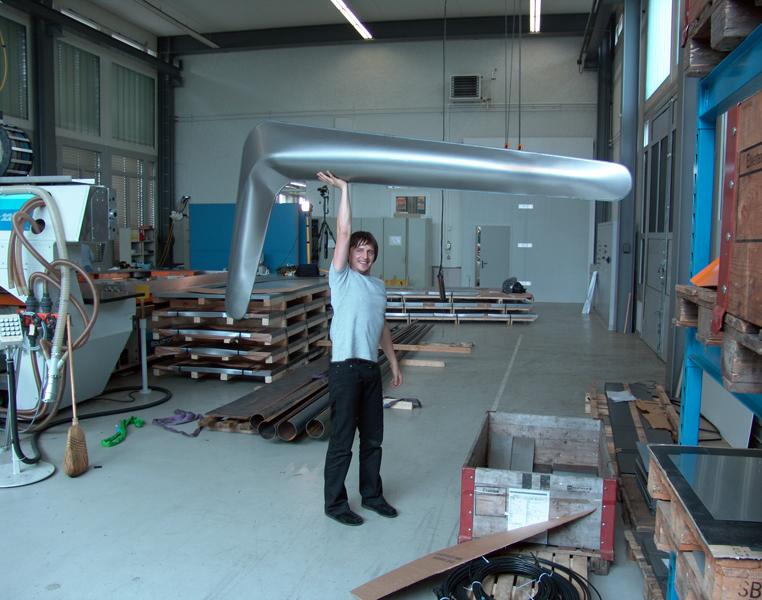
Much of that research has been put towards developing what he calls the “FiDU alphabet,” which is essentially the set of criteria that govern the outcome of the often-unpredictable process. “We look at what happens with various geometries, or when we use a very strange angle, or when we make everything very smooth, or when we change the size of a section, the way a tailor does when he takes the dimensions of a person and then has to translate them into a 3-D form.” Here, Zieta holds an element he calls a “seahorse” — primarily an experiment in finding the proper angle for corners that can inflate without deforming or twisting.